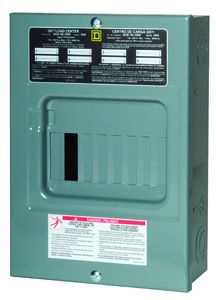Thought the panel had to be rated for a tandem?
??? So your saying that a 100a 20circuit (no tandem ratings) could get filled with tandems as long as it doesn't go over 42 circuits??
Works for me...
When a panel's NP shows 20ckts how does that equal 42 is that with refernce to the largest panel with the most number of circuits? If so I believe that a 42ckt panle is not available that tandem breakers can be intalled.
Remember ckts are different than spaces. Spaces are either 1" or 3/4". As such full size breakers are either 1" as with the Eaton BR and the SqD Homeline for example and 3/4" for the Eaton C-H and the SqD QO. There a various combinations of 20, 24, and 30ckt panels that have provisions for tandem breakers for up to 40ckts total.
As an example there a Eaton BR panels that are:
12sp-20ckt which means (12) 1" breakers or (4) 1" and (20) tandems
10 20 which means (10) 1" or a combinations of 1" up to (20) tandems and no 1"
12 24
16 20
16 24
20 40
24 40
30 40
The panels where spaces equal circuits will not allow tandems to be installed because they have a reject feature in each space as those panels that permit part of the spaces for use with tandem breakers such as a 12/20 panel where 4 spaces will not allow the installation of tandem breakers.
Personally I have found no difference in the actual construction of a 16sp/16ckt panel and a 16sp/20ckt. which are the same size except that the 16/16 rejects the use of tandem breakers which makes it a marketing thing.

